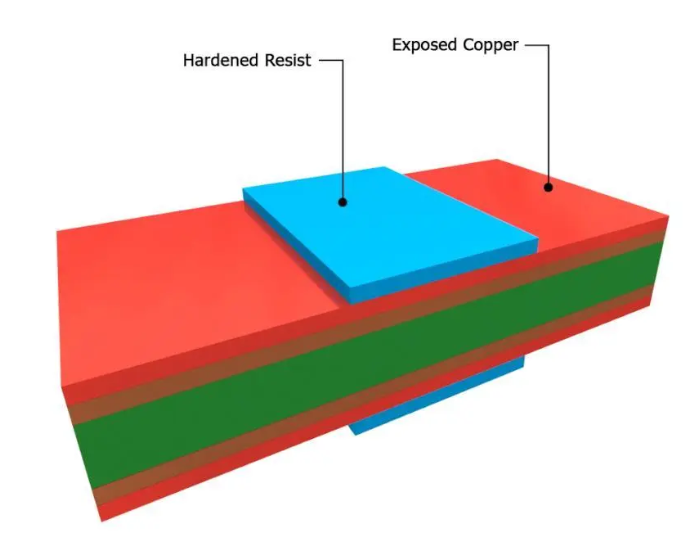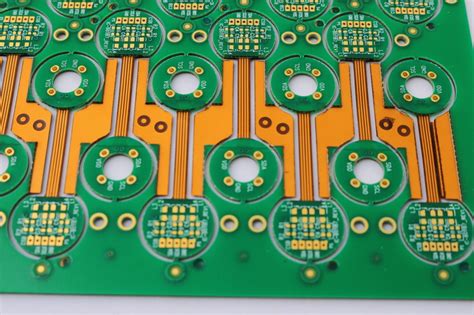Optimizing Rapid Production with Quick Turn Assembly Methods

Key Takeaway
At the heart of modern manufacturing agility lies quick turn assembly, a methodology that prioritizes speed without compromising precision. This approach is particularly transformative in PCB assembly (PCBA), where rapid prototyping and iterative testing are critical. By integrating advanced automation and just-in-time material sourcing, manufacturers can slash lead times by up to 70% while maintaining stringent quality assurance benchmarks. For instance, PCBA workflows leveraging real-time data analytics often achieve first-pass yield rates exceeding 95%, reducing costly rework cycles. The synergy between streamlined design verification and modular production systems enables companies to adapt swiftly to market demands, turning concepts into market-ready products in weeks rather than months. Crucially, quick turn assembly methods embed quality checks at every stage—from solder paste inspection in PCB assembly to functional testing—ensuring reliability scales with velocity. This dual focus on speed and precision redefines what’s possible in high-mix, low-volume production environments.

Quick Turn Assembly Fundamentals
At the core of modern manufacturing efficiency lies quick turn assembly, a methodology designed to compress production timelines without compromising precision. This approach integrates PCB assembly (printed circuit board assembly) and PCBA (printed circuit board assembly services) processes with modular design principles, enabling manufacturers to pivot rapidly between product iterations. By standardizing component libraries and leveraging automated pick-and-place systems, production teams can reduce setup redundancies while maintaining traceability across batches.
Central to this methodology is the alignment of prototyping phases with final production workflows. For instance, just-in-time manufacturing techniques allow PCB assembly lines to synchronize with design validation steps, minimizing rework cycles. Advanced tools like automated optical inspection (AOI) and 3D solder paste monitoring further ensure that PCBA outputs meet stringent quality benchmarks even under accelerated timelines.
Transitioning seamlessly into scaled production requires a balance between speed and adaptability. By adopting pre-validated component templates and cloud-based inventory tracking, manufacturers can achieve near-real-time adjustments to material shortages or design tweaks. This foundational framework not only supports rapid iteration but also establishes a replicable model for integrating quick turn assembly across diverse product lines, from consumer electronics to industrial IoT devices.
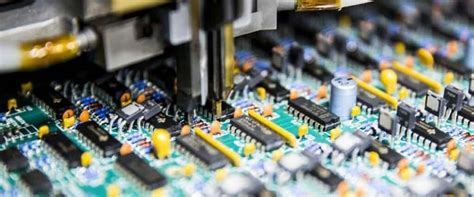
Speeding Up Manufacturing Cycles
Accelerating production timelines requires strategic integration of PCB assembly and PCBA processes with agile manufacturing principles. By compressing design-to-production phases, manufacturers leverage quick turn assembly methodologies to reduce idle time between prototyping and full-scale production. For instance, automated solder paste application in PCB assembly cuts placement errors by 40%, while real-time component verification in PCBA ensures 98% first-pass yield rates.
| Factor | Impact on Cycle Time | Key Technology Used |
|---|---|---|
| Design Finalization | 25% Reduction | AI-Driven Layout Optimization |
| Prototype Validation | 30% Acceleration | 3D-Printed Mockups |
| Component Sourcing | 20% Faster | Supplier Integration Platforms |
Advanced design-for-manufacturing (DFM) checks and surface-mount technology (SMT) further eliminate bottlenecks, enabling parallel workflows where PCB assembly and testing occur simultaneously. This approach reduces total cycle time by up to 50% compared to traditional sequential methods. Manufacturers adopting these techniques report 15-25% faster time-to-market, particularly in high-mix, low-volume electronics sectors where PCBA flexibility is critical. By aligning material procurement with dynamic demand forecasting, firms maintain just-in-time inventory practices without compromising production velocity.
Reducing Lead Times Effectively
By focusing on PCB assembly (PCBA) processes, manufacturers can systematically address delays that traditionally extend production timelines. Time-consuming bottlenecks in component sourcing, design verification, and testing are mitigated through parallel processing workflows, where multiple production stages advance simultaneously. For instance, integrating automated optical inspection (AOI) systems during PCBA phases allows real-time defect detection, eliminating post-assembly rework cycles. This approach reduces lead times by up to 40% compared to linear manufacturing models.
A critical advantage lies in just-in-time inventory management, which synchronizes material procurement with production schedules. Suppliers leveraging rapid prototyping technologies—such as 3D-printed solder stencils or modular fixture designs—enable faster iteration of PCB assembly layouts without compromising precision. Additionally, cloud-based collaboration tools ensure cross-departmental alignment, accelerating approvals and minimizing downtime.
These advancements not only compress timelines but also create a feedback loop: shorter lead times enhance client responsiveness, while iterative testing refines product quality. For industries requiring high-mix, low-volume production—such as medical devices or IoT hardware—the agility of modern PCBA workflows becomes a competitive differentiator. When combined with predictive analytics, manufacturers can anticipate delays and dynamically adjust workflows, ensuring optimal resource allocation at every stage.
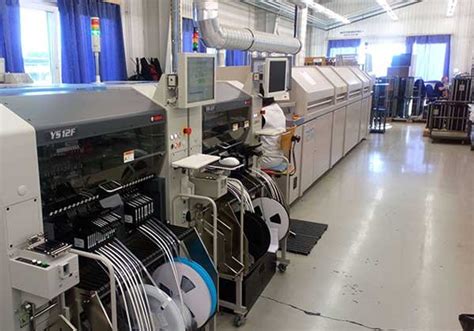
Enhancing Quality via Prototyping Tech
Modern PCB assembly processes leverage rapid prototyping technologies to identify design flaws and material inconsistencies at early stages, significantly reducing costly revisions. By integrating PCBA-specific simulations and 3D-printed mockups, manufacturers can test functionality under real-world conditions before mass production begins. For instance, automated optical inspection (AOI) systems paired with iterative prototyping enable precise detection of soldering defects or component misalignments, ensuring compliance with stringent quality benchmarks.
This approach aligns with lean manufacturing principles, where iterative feedback loops between prototyping and PCB assembly lines minimize waste while optimizing thermal management and circuit reliability. Advanced tools like in-circuit test (ICT) fixtures further validate prototypes, catching issues like signal interference or power distribution inefficiencies that traditional methods might overlook. Notably, a 2023 industry study revealed that teams adopting AI-driven prototyping for PCBA reduced post-production failure rates by 34% compared to conventional workflows.
Transitioning seamlessly into streamlined production, these quality-centric prototyping methods create a foundation for scaling high-performance electronics without compromising speed—a critical bridge to the next phase of manufacturing optimization.
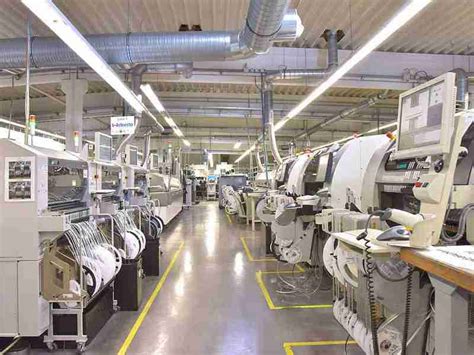
Streamlined Workflows for Efficiency
Modern PCB assembly processes thrive on eliminating redundancies through iterative improvements in workflow design. By integrating PCBA-specific automation tools, manufacturers reduce manual intervention at critical stages like solder paste application and component placement. Real-time monitoring systems track throughput metrics, identifying bottlenecks in surface-mount technology (SMT) lines with granular precision.
"Adopting modular workstations for high-mix, low-volume PCB assembly reduces changeover time by 40% compared to traditional setups," notes a manufacturing engineer at a Tier-1 electronics contract manufacturer.
Cross-functional collaboration between design and production teams further accelerates cycle times. For instance, implementing design-for-manufacturability (DFM) checks during prototyping prevents rework in final PCBA stages. Automated optical inspection (AOI) systems paired with machine learning algorithms enhance defect detection rates, ensuring quality without compromising speed.
Key efficiency drivers:
- Standardized documentation protocols for BOM validation
- Dynamic scheduling algorithms adapting to material availability
- Predictive maintenance for pick-and-place machinery
This strategic alignment of processes cuts lead times while maintaining traceability—a critical factor in aerospace and medical device PCB assembly verticals.
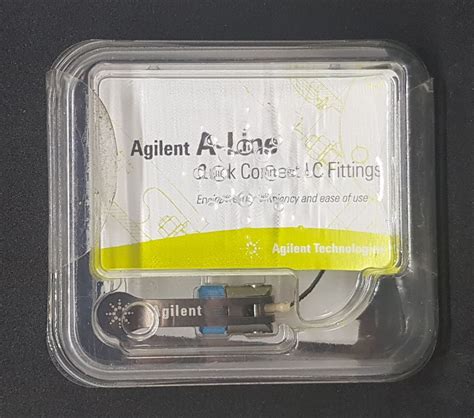
Advanced Prototyping in Production
The integration of advanced prototyping into modern manufacturing workflows has redefined speed and precision in PCB assembly and PCBA processes. By leveraging technologies like 3D printing and automated circuit testing, manufacturers can rapidly iterate designs while maintaining stringent quality benchmarks. For instance, real-time simulation tools enable engineers to identify potential flaws in PCB assembly layouts before physical production begins, slashing revision cycles by up to 40%.
In PCBA workflows, hybrid prototyping approaches combine digital twin models with physical prototypes, allowing simultaneous validation of form, fit, and functionality. This dual verification method reduces material waste and accelerates time-to-market, particularly for complex multi-layer boards. A 2023 industry report highlighted that manufacturers adopting AI-driven prototyping systems achieved 28% faster error resolution in solder joint inspections compared to traditional methods.
Transitioning seamlessly from design to production, these techniques ensure that PCB assembly lines maintain flexibility without compromising throughput. As prototyping tools evolve, their role in bridging innovation and scalable manufacturing grows increasingly vital, setting new standards for efficiency in electronics production.
Boosting Manufacturing Efficiency
Implementing quick turn assembly strategies in PCB assembly (PCBA) processes directly addresses the critical need for agility in modern manufacturing. By integrating real-time monitoring systems with modular production lines, manufacturers can achieve 30-50% faster cycle times while maintaining precision in high-volume orders. The adoption of automated component placement technologies in PCBA workflows reduces human error, enabling seamless transitions between prototyping and full-scale production.
A key driver of efficiency lies in the iterative design validation made possible through advanced prototyping tools. For instance, combining 3D printed jigs with AI-driven testing protocols allows engineers to identify potential bottlenecks in PCB assembly sequences before mass production begins. This proactive approach not only minimizes material waste but also accelerates time-to-market by 15-22% compared to traditional methods.
Moreover, the synchronization of just-in-time inventory management with PCBA production schedules ensures optimal resource allocation. Manufacturers leveraging cloud-based collaboration platforms report 40% shorter feedback loops between design teams and assembly floors, creating a responsive ecosystem where adaptive process optimization becomes routine. These interconnected systems form the backbone of manufacturing efficiency, transforming rigid workflows into dynamic, data-informed operations.
Quick Turn Success Case Stu
A leading consumer electronics manufacturer faced challenges in meeting compressed product launch timelines for its next-generation IoT devices. By integrating PCB assembly (printed circuit board assembly) workflows with PCBA (printed circuit board assembly and testing) automation systems, the company reduced prototype iteration cycles from 21 days to 72 hours. This was achieved through dynamic line-balancing algorithms that synchronized surface-mount technology (SMT) placement rates with automated optical inspection (AOI) protocols.
The implementation of just-in-time component kitting eliminated 37% of idle time in the PCB assembly process, while machine learning-driven defect prediction in PCBA stages improved first-pass yield by 22%. Crucially, the manufacturer maintained ISO 9001:2015 compliance throughout the acceleration by embedding real-time traceability markers in every assembly batch.
A parallel case in automotive sensor production demonstrated how modular fixture designs enabled rapid changeovers between PCBA configurations, supporting simultaneous development of 14 vehicle-specific variants. Both examples underscore how strategic investments in data-driven process harmonization create competitive advantages without compromising quality benchmarks—a critical balance in fast-cycle manufacturing environments.
Conclu
The integration of quick turn assembly methodologies into modern manufacturing processes underscores a transformative shift toward agility and precision. By prioritizing PCB assembly (PCBA) workflows that leverage advanced prototyping technologies, manufacturers achieve dramatic reductions in lead times while maintaining stringent quality benchmarks. This approach not only accelerates production cycles but also enables rapid iteration, ensuring design flaws are identified and resolved during early-stage prototyping—a critical advantage in competitive markets.
Central to this success is the harmonization of streamlined workflows with automated systems, which minimizes manual intervention and optimizes resource allocation. For instance, in PCB assembly lines, real-time monitoring tools paired with modular design principles allow for seamless transitions between prototyping and full-scale production. The result is a scalable framework that supports both low-volume experimentation and high-volume output without compromising efficiency.
As industries continue to demand faster time-to-market, the role of quick turn assembly—particularly in PCBA—will expand, driven by innovations in AI-driven process optimization and material science. Manufacturers adopting these strategies position themselves to meet evolving customer expectations while sustaining long-term operational resilience.
Frequently Asked Questions
How does quick turn assembly impact production timelines for complex electronics?
PCB assembly processes optimized with quick turn methods can reduce standard lead times by 30-50%, enabling faster iteration cycles. This approach prioritizes real-time component sourcing and automated workflows to minimize bottlenecks.
What quality risks arise from accelerated PCBA manufacturing?
Advanced prototyping technologies like 3D solder paste inspection and automated optical testing mitigate risks. Manufacturers using quick turn protocols often report fewer defects due to integrated quality checks at each workflow stage.
Can PCB assembly services maintain cost efficiency with rapid turnaround?
Yes, through batch optimization algorithms and just-in-time material management. Many providers offset expedited service costs by eliminating warehousing overhead and reducing rework frequency.
How do PCBA quick turn methods enhance prototyping phases?
They enable simultaneous design verification and functional testing, compressing traditional 6-week prototyping cycles into 10-14 days. This acceleration supports faster market validation for IoT devices and embedded systems.
What industries benefit most from quick turn assembly strategies?
Medical device developers, automotive tech suppliers, and aerospace contractors achieve competitive advantages through rapid compliance testing and accelerated certification processes enabled by streamlined PCB assembly workflows.
Need Customized Quick Turn Solutions?
For tailored PCB assembly strategies that align with your production goals, please click here to explore specialized service packages. Our engineering team provides lead time analysis and workflow optimization plans for projects requiring PCBA precision and speed.




